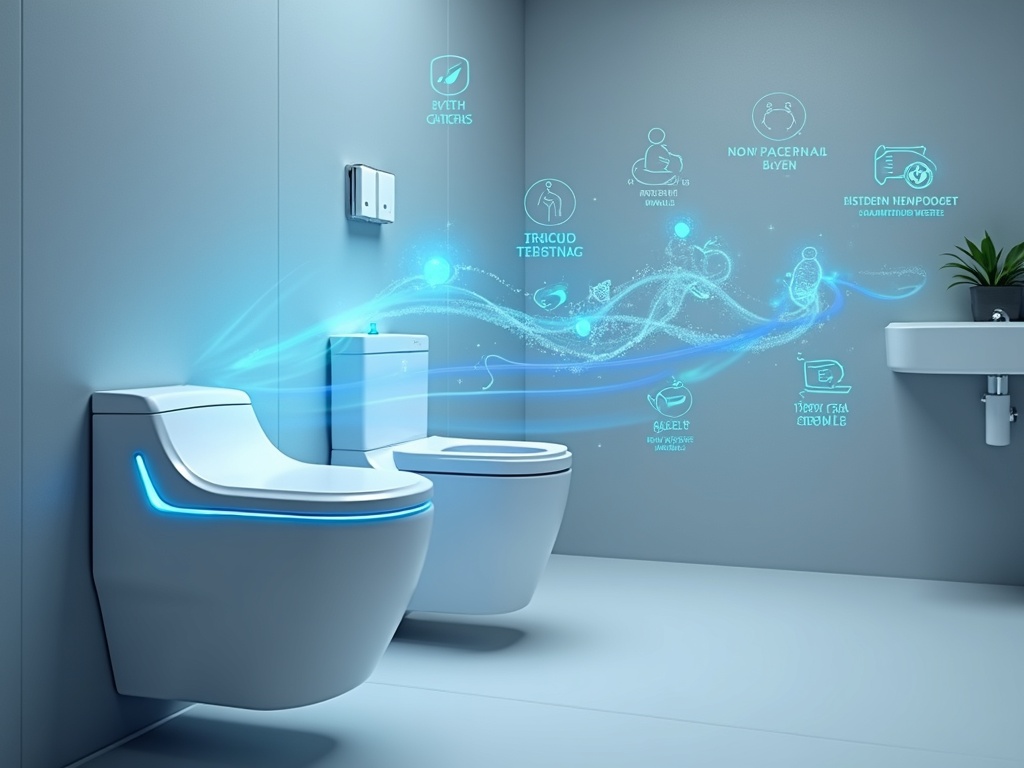Bidet
What Is A Bidet And Why Everyone Talks About It
A bidet is a water-based plumbing fixture that washes the perineal and anal areas after using the toilet, offering superior hygiene compared to toilet paper alone.
Key Takeaways
- Bidets offer more effective cleaning by using water to remove bacteria and residue, reducing irritation and providing relief for conditions like hemorrhoids and aiding post-surgical recovery.
- Modern bidets come in various types, from non-electric attachments ($30–$100) to electric seats ($200–$700) and all-in-one luxury systems, catering to different budgets and installation preferences.
- Environmental and financial advantages are significant. While the average American household spends $180–$300 annually on toilet paper, bidets use only 1/8 gallon per use, in contrast to the 37 gallons it takes to manufacture a single toilet paper roll.
- Cultural adoption varies worldwide. Over 80% of Japanese homes use bidets, they are widespread across Asia and the Middle East, standard in Europe, and increasingly common in North America after the 2020 toilet paper shortage.
- The global bidet market is growing steadily at 5.9% annually, fueled by better hygiene awareness, sustainability goals, and ease of installation that appeals to renters and homeowners alike.
I’ve used bidets for years and can confidently say they transform your bathroom experience. The cleanliness level you achieve with water far exceeds what toilet paper offers. My first bidet installation changed my daily routine completely.
Health and Hygiene Benefits
Water provides a gentle yet thorough cleaning action that removes bacteria and waste more effectively than wiping alone. This superior method helps reduce irritation and lowers the risk of spreading harmful microorganisms. Since making the switch to a bidet, I’ve noticed significantly less irritation.
Medical Applications
- Hemorrhoid sufferers benefit greatly from the soothing action of a water stream.
- Post-surgical patients avoid discomfort caused by harsh wiping.
- Pregnant women and new mothers appreciate the hygienic and gentle cleanse bidets provide.
Installation Options
The installation process depends on the type of bidet chosen:
- Non-electric attachments are easy to install and require minimal plumbing skills—installation takes less than an hour.
- Electric bidet seats need access to a nearby electrical outlet and mount easily on standard toilet bowls.
- Standalone bidet units demand more space and typically require professional plumbing service for proper installation.
Cost and Budgeting
Bidets fit a range of budgets:
- Basic attachments start at $30 and provide essential spray functions.
- Mid-range electric seats include features like heated seats, adjustable water pressure, and air drying ($200–$700).
- Luxury bidets can cost $700–$2,000 and offer advanced features such as night lights, automatic operations, and multi-user presets.
I recommend trying a basic attachment first. Many users later upgrade to electric models after enjoying the benefits. The long-term savings on toilet paper often offset the initial investment.
Environmental Impact
Bidets are eco-friendly alternatives to toilet paper:
- Each toilet paper roll requires 37 gallons of water for manufacturing. Bidets consume just 1/8 gallon per use.
- Americans use 36.5 billion toilet paper rolls annually, leading to the destruction of approximately 15 million trees each year.
- Bidet users reduce toilet paper usage by up to 85%, significantly conserving forest resources.
- The chemical processes used to produce toilet paper pollute water systems and reduce air quality, concerns entirely avoided with bidet use.
Switching to a bidet has not only reduced my carbon footprint but also minimized waste and personal cost.
Financial Benefits
The savings with bidet adoption are noticeable:
- The average household saves $180–$300 yearly by reducing or replacing toilet paper purchases.
- Basic maintenance includes occasional filter replacement ($10–$20/year for non-electric models) and cleaning. My electric model requires minimal upkeep and continues to perform well after five years.
- Installation expenses vary. DIY-friendly models install without added cost, while electric seats may need a $100–$200 installation. Full standalone bidets cost more due to plumbing modifications ($300–$800).
Global Cultural Acceptance
Bidet use is common in many parts of the world:
- Japan leads bidet adoption, with over 80% of households using high-tech models.
- Asian and Middle Eastern countries consider bidets a normal bathroom feature.
- European homes often include standalone bidet units as standard fixtures.
- North America saw a surge in bidet purchases during the 2020 toilet paper shortage, leading to greater mainstream acceptance.
Generational Influence
Adoption patterns often follow generational lines. Younger people are more open to trying new bathroom technology. Older individuals may be hesitant, but demonstrations and education often dispel their concerns.
Technological Advancements
Emerging features are making bidets smarter and more user-friendly:
- Smartphone connectivity allows user customization and memory settings.
- Sensors activate wash cycles and adjust temperature automatically.
- High-end models include UV sterilization, deodorization, and motion-activated lids.
Continued innovation enhances performance and convenience, further encouraging adoption.
Market Growth and the Future
The global bidet market is projected to grow by 5.9% annually. This is driven by:
- Increased health and hygiene awareness following global public health issues.
- Environmental concerns leading to more sustainable household choices.
- Easy retrofitting options that appeal to renters and people in urban dwellings.
I believe bidets will become standard in new home construction across North America within the coming decade. Their health, environmental, and financial benefits are too compelling to ignore. As prices drop and public perception shifts, wider adoption seems inevitable.
Choosing the Right Bidet
Your selection should be based on your budget, installation options, and desired features. Starting with an affordable attachment is a great way to test preferences before committing to a more advanced model.
Make sure to read product reviews and compare warranties before making a final decision. For more guidance, websites like BidetKing.com offer detailed buying guides and product overviews.
The Bidet Revolution: A Modern Solution to an Age-Old Problem
I’ve encountered countless questions about bidets, and the answer is refreshingly simple: a bidet is a plumbing fixture designed to wash your perineal and anal areas with water after using the toilet. This water-based cleansing method provides a more thorough and hygienic clean than toilet paper alone.
The concept makes perfect sense when you think about it practically. If you got mud on your hand, you wouldn’t just wipe it with a dry paper towel – you’d wash it with water. The same logic applies to personal hygiene after using the bathroom. Water cleansing removes bacteria and residue more effectively than dry wiping, leaving you feeling fresh and truly clean.
A French Innovation with Global Appeal
The term “bidet” originated in 17th or early 18th century France, where the word means “pony” in French. This name references the straddling motion originally required to use early stand-alone models. French aristocrats introduced this revolutionary hygiene concept, which has since spread worldwide and evolved dramatically.
Modern Bidet Options for Every Bathroom
Today’s bidets come in several convenient forms to suit different needs and budgets:
- Stand-alone ceramic fixtures that resemble a low sink
- Electronic toilet seats with built-in spray functions and temperature controls
- Non-electronic attachments that install under your existing toilet seat
- Handheld sprayers that mount beside your toilet
I recommend starting with basic bidet attachments if you’re new to water cleansing. These affordable options install easily and provide an excellent introduction to bidet benefits without major bathroom renovations.
Electronic models offer luxury features like heated water, adjustable pressure, and warm air drying. However, even simple attachments deliver the core benefit: superior cleanliness through water washing. Bidet attachments transform your existing toilet into a hygiene powerhouse without the expense of a full bathroom remodel.
The bidet revolution addresses a fundamental problem: traditional toilet paper simply can’t match water’s cleaning power. Whether you choose a simple attachment or a high-tech electronic seat, you’ll experience the difference that proper water cleansing makes for your daily hygiene routine.
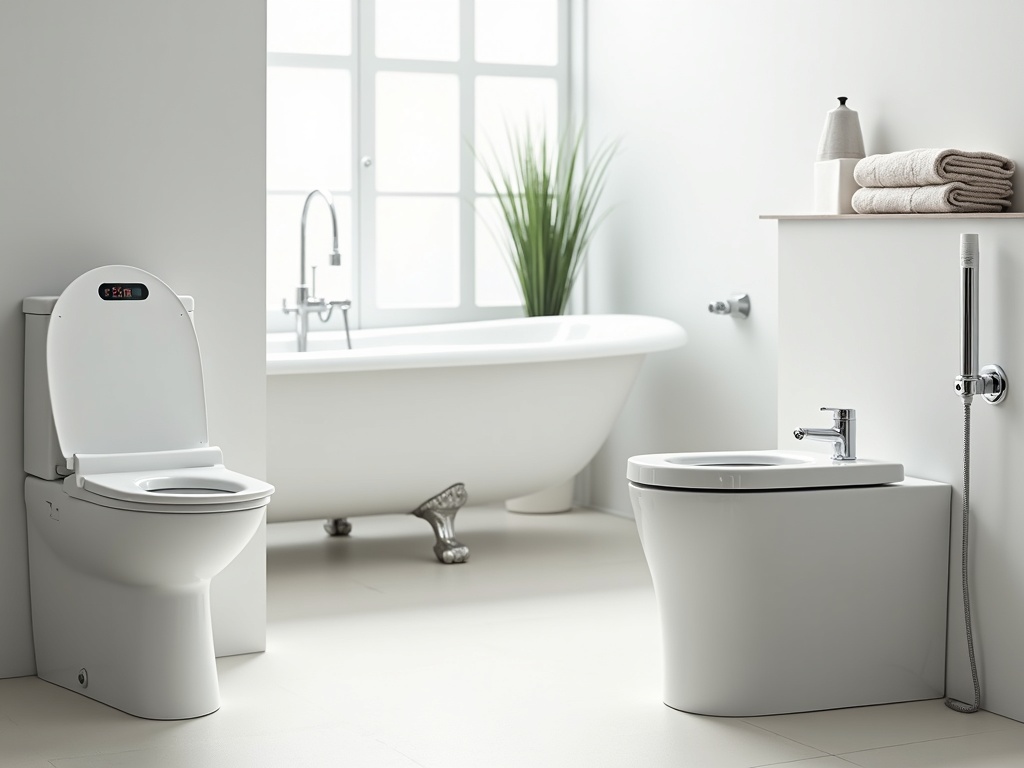
Why Bidets Are Better: Hygiene and Health Benefits
I’ve discovered that water-based cleansing fundamentally changes how we approach personal hygiene. When you compare washing with water to wiping with dry paper, the difference becomes clear immediately. Bidet hygiene benefits start with the basic fact that water removes fecal bacteria far more effectively than paper can achieve.
Traditional toilet paper often smears residue rather than removing it completely. This incomplete cleaning can leave behind fecal matter and create micro-abrasions on sensitive skin. Water cleansing eliminates these problems by providing a thorough rinse that doesn’t require harsh rubbing or pressure.
Medical Benefits and Relief
I recommend bidets particularly for people dealing with specific health conditions. Hemorrhoids, anal fissures, and general irritation improve significantly when you eliminate the friction and abrasion that wiping causes. The gentle water stream soothes inflamed tissue while providing complete cleansing without aggravating existing conditions.
Doctors regularly recommend water cleansing for various medical conditions affecting the perineal area. Recovery from surgery or childbirth becomes more comfortable when you can clean thoroughly without physical contact or pressure. Feminine hygiene particularly benefits from this approach, as the frontal wash feature helps reduce UTI risk by washing away bacteria that wiping might otherwise spread.
Accessibility and Comfort Advantages
Mobility challenges make bidets invaluable for many users. Elderly individuals and those with physical limitations find water cleansing much easier than reaching and twisting required for thorough paper wiping. The hands-free operation of many bidet attachments provides independence and dignity that traditional methods can’t match.
Postpartum care represents another area where bidets excel. New mothers dealing with episiotomies, tears, or general soreness find immediate relief through gentle water cleansing. The temperature control available in many systems adds therapeutic warmth that promotes healing and comfort.
I’ve found that people often underestimate how much irritation comes from daily paper use. Even the softest toilet paper creates friction against delicate skin. Over time, this constant abrasion can lead to chronic irritation and sensitivity. Toilet bidet attachments eliminate this daily trauma while providing superior cleanliness that you can feel immediately.
The health benefits extend beyond immediate comfort. Better hygiene reduces the risk of infections and skin conditions that develop from inadequate cleaning or harsh wiping practices.

Save Trees, Water, and Money: The Environmental and Financial Impact
Americans consume more toilet paper than any other nation, burning through over 36.5 billion rolls annually. This staggering consumption translates to massive environmental destruction. Producing just one roll requires approximately 37 gallons of water, 1.5 pounds of wood, and substantial chlorine for bleaching. Daily, 27,000 trees fall worldwide to meet global toilet paper demand.
Bidets offer a dramatically different approach. Each bidet wash uses only about 1/8th of a gallon (0.125 gallons) of water per use. This means you’d need to use a bidet roughly 300 times to equal the water required for producing a single toilet paper roll.
Financial Benefits That Add Up Fast
The average American household spends $180 to $300 yearly on toilet paper. Larger families often exceed these amounts significantly. Bidet attachments create immediate savings opportunities. Quality non-electronic models cost just $30 to $100 as a one-time purchase.
Electric bidet seats carry higher upfront costs ranging from $200 to $700 or more, but they deliver impressive returns on investment. Most households see complete ROI within 1–3 years through eliminated or drastically reduced toilet paper purchases. Even users who prefer small amounts of toilet paper for drying still reduce consumption by 75–90%.
Installing a bidet attachment transforms your bathroom economics. Instead of recurring monthly toilet paper expenses, you make one purchase that pays dividends for years. The math becomes even more compelling when considering environmental costs that don’t appear on your monthly budget but affect everyone’s future.
Water usage comparisons reveal bidets’ efficiency advantage. While toilet paper production demands enormous water quantities before the product reaches your home, bidets use minimal water at the point of use. This efficiency extends beyond individual savings to community-wide water conservation.
I recommend calculating your household’s annual toilet paper spending to understand potential bidet savings:
- Multiply your monthly toilet paper purchases by twelve.
- Compare this figure against bidet costs.
- Factor in your family size and usage patterns.
Larger households typically achieve faster payback periods due to higher baseline toilet paper consumption.
Bidets provide superior cleanliness while delivering environmental and financial benefits. The technology reduces dependence on paper products that require extensive processing, transportation, and packaging. Each eliminated toilet paper package represents:
- Saved trees
- Reduced chemical processing
- Lower carbon emissions from manufacturing and shipping
For families focused on sustainable living, bidets represent practical environmental action. You can measure your impact by tracking reduced toilet paper purchases over time. Many users report feeling satisfied knowing their daily hygiene routine actively contributes to forest conservation and reduced industrial waste.
Basic bidet attachments offer the most accessible entry point for budget-conscious households. These models provide core functionality without advanced features, making environmental and financial benefits immediately accessible. Upgrading to electric models later remains an option as budgets allow.
Consider maintenance costs when evaluating long-term savings. Quality bidets require minimal upkeep compared to continuously purchasing consumable paper products. This reliability factor strengthens the financial argument for bidet adoption across different household types and budgets.
Bidet Options: From Basic to Luxurious
Choosing the right bidet depends on your budget, comfort preferences, and installation capabilities. I’ll guide you through the main categories, from entry-level solutions to premium installations that transform your bathroom experience.
Budget-Friendly Attachments and Sprayers
Bidet attachments represent the most accessible entry point into bidet ownership. These non-electric units install directly under your existing toilet seat and typically cost under $100. Popular models like the TUSHY Classic 3.0 and Luxe Bidet Neo 120 offer basic spray functions without requiring electrical connections.
Installation remains refreshingly simple – most people complete the process in under 30 minutes using basic tools. You’ll connect the attachment to your toilet’s water supply line and secure it between your toilet bowl and seat. The straightforward design means fewer components that could malfunction over time.
Handheld bidet sprayers, also known as shattaf, provide another budget-conscious option. Models like the Brondell CleanSpa Handheld Bidet and SonTiy Handheld Sprayer connect directly to your toilet’s water supply through a hose system. This design gives you complete manual control over water pressure and spray direction, making it particularly useful for various cleaning tasks beyond personal hygiene.
Mid-Range Electric Seats and Premium All-in-One Systems
Electric bidet seats replace your existing toilet seat entirely and require a nearby GFCI electrical outlet. These units have gained significant popularity in East Asia and continue expanding throughout the U.S. market. Models like the TOTO Washlet C5, Bio Bidet Bliss BB-2000, and Brondell Swash 1400 offer heated water, warm seats, adjustable nozzles, and built-in air dryers.
The convenience factor jumps dramatically with electric seats. You’ll enjoy consistent water temperature, customizable spray patterns, and hands-free drying. Many models include user presets, allowing family members to save their preferred settings. Advanced features often include oscillating spray patterns, pulsating massage functions, and automatic deodorization.
All-in-one bidet toilets represent the luxury tier of bidet ownership. Complete units like the TOTO Neorest series and Kohler Veil Intelligent Toilet integrate bidet functions directly into specially designed toilet bowls. These systems offer the most advanced features available, including:
- Auto-opening lids
- Self-cleaning nozzles
- Automatic flushing
- Sophisticated control panels
Professional installation becomes necessary for all-in-one units since they require new plumbing connections and electrical work. The investment reflects in both initial cost and long-term functionality – these systems often include multiple user profiles, smartphone app control, and maintenance reminder systems.
Understanding what a toilet bidet offers helps you match features to your actual needs. Electric seats work well for most households seeking enhanced comfort without major bathroom renovations. Meanwhile, attachments provide excellent value for those wanting to experience bidet hygiene benefits without significant upfront investment.
Your choice ultimately depends on balancing desired features against budget constraints and installation complexity. Basic bidet attachments serve households perfectly well when convenience matters more than luxury features. Electric seats appeal to users wanting consistent performance and enhanced comfort. All-in-one systems satisfy those seeking the ultimate bathroom upgrade with cutting-edge technology and seamless integration.
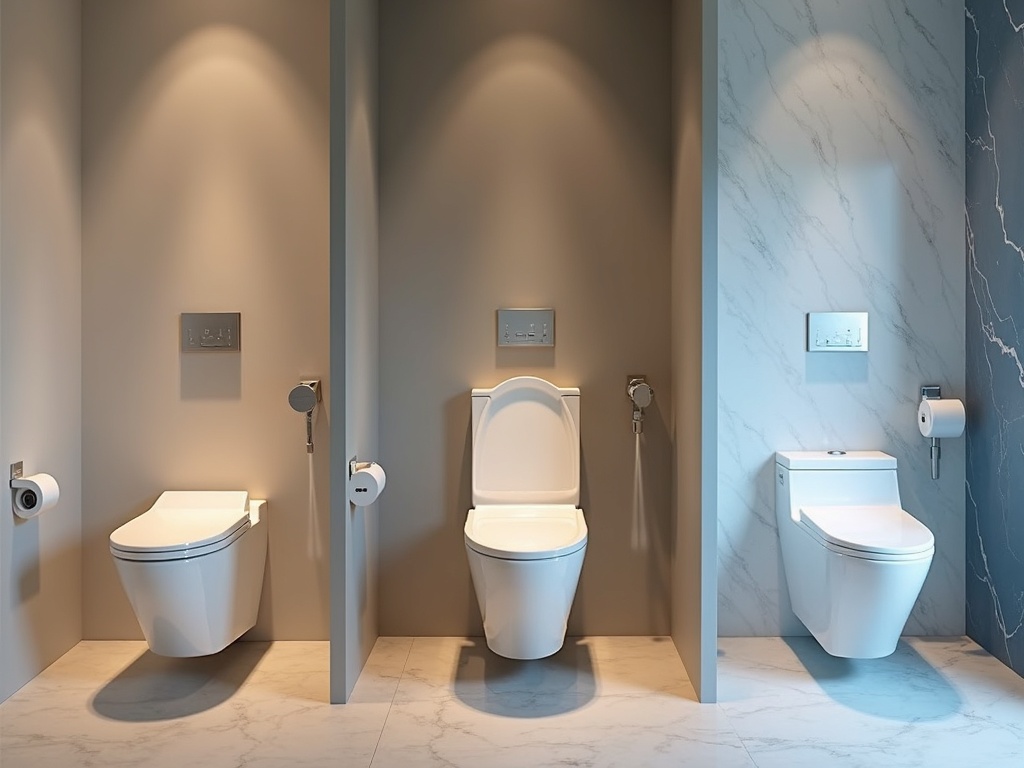
From Taboo to Trendy: The Rise of Bidet Culture
The toilet paper shortage of March 2020 marked a turning point for bidet adoption in North America. I witnessed firsthand how this unexpected crisis forced millions to reconsider their bathroom habits and explore alternatives they had previously dismissed. Bidet company TUSHY reported its sales in March 2020 were more than 10 times what they were in the previous year, while Brondell experienced a “tidal wave of orders” with some products completely selling out.
Global Trends Driving Bidet Popularity
Several powerful cultural shifts have transformed what is a toilet bidet from a foreign curiosity into a must-have bathroom fixture. The growing global focus on wellness, self-care, and enhanced hygiene aligns perfectly with the benefits that bidets provide. I’ve observed how health-conscious consumers increasingly prioritize products that promote better personal care routines.
Social media and influencer marketing have played crucial roles in destigmatizing bidets across Western markets. Instead of being viewed as unusual foreign novelties, bidets now appear in lifestyle content as modern, desirable home upgrades. Influencers regularly showcase their bathroom renovations featuring sleek bidet attachments, normalizing their presence in contemporary homes.
Market Growth and Global Adoption
The momentum behind bidet culture reflects established international standards. Bidets have been standard fixtures in many parts of the world for decades, including Italy, Japan, South Korea, and much of the Middle East. These regions never questioned the logic of water-based cleansing, making North America’s recent adoption more of a catching-up process than a revolutionary trend.
Market data supports this cultural shift toward bidet acceptance. The global bidet market size was valued at USD 2.5 billion in 2021 and continues projecting significant growth. I attribute this expansion to multiple factors:
- Increased awareness of bidet hygiene benefits
- Environmental consciousness about paper waste
- The practical appeal of basic bidet toilet attachments that retrofit existing bathrooms
The transformation from taboo to trendy represents more than just a bathroom upgrade trend. It signals a broader cultural evolution toward embracing international wellness practices and questioning long-held assumptions about personal hygiene. Understanding why you need a toilet bidet attachment has become less about novelty and more about practical health benefits.
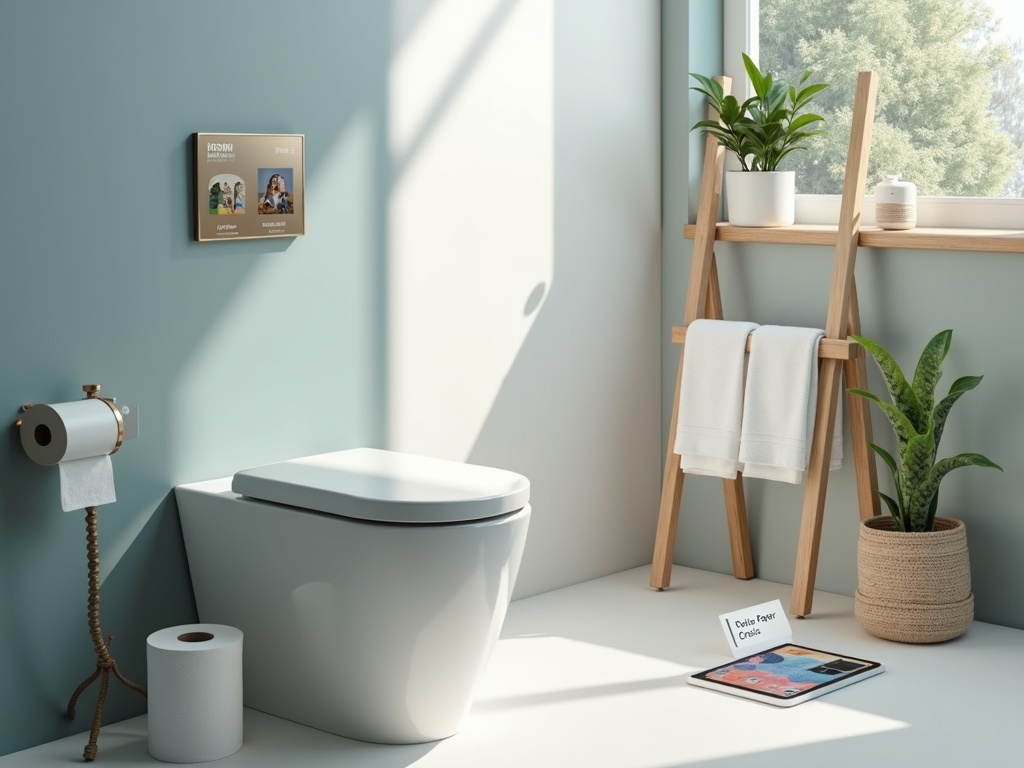
Going Global: How Different Cultures Embrace the Bidet
I’ve discovered fascinating differences in how cultures around the world have integrated bidets into their daily hygiene routines. Each region has developed distinct preferences that reflect local customs, technological advancement, and practical considerations.
Asian Innovation and Widespread Adoption
Japan leads the world in bidet technology, with high-tech toilets featuring integrated bidet functions, known as “washlets,” found in over 80% of households. These sophisticated systems offer heated seats, adjustable water pressure, air drying, and even automated functions that activate when someone approaches the toilet. Japanese manufacturers continue pushing boundaries with features like self-cleaning nozzles and personalized user settings.
South Korea has followed Japan’s example enthusiastically, with an estimated 3 in 4 households owning electronic bidet seats. Korean models often emphasize user-friendly controls and energy efficiency, making advanced bidet technology accessible to a broader population.
Throughout the Middle East and parts of Asia, handheld sprayers represent the cultural norm and are considered essential for proper hygiene. These simple yet effective devices connect directly to the toilet’s water supply, providing users with complete control over water direction and pressure. I find this approach particularly practical because it requires minimal installation and maintenance while delivering excellent cleaning results.
European Traditions and American Resistance
European countries maintain strong bidet traditions, though approaches vary significantly by region. In Italy, France, and Portugal, traditional stand-alone bidets are common fixtures in bathrooms, often positioned adjacent to the toilet as separate porcelain fixtures. These classic designs reflect centuries of European hygiene culture and remain popular in upscale hotels and residential properties.
Americans have been the slowest to adopt bidets, largely due to cultural unfamiliarity and initial misconceptions about their purpose. Many Americans first encounter bidets during European travel and return home curious about bidet benefits. However, this resistance is gradually changing as awareness grows about hygiene advantages, environmental benefits, and the convenience of modern bidet attachments.
Cultural misconceptions in America often stem from lack of education about proper bidet use and purpose. Some people mistakenly believe bidets are unsanitary or difficult to use, when in fact they provide superior cleaning compared to toilet paper alone. The growing interest in feminine hygiene and overall health benefits is helping overcome these barriers.
Market trends support this shifting perspective, with the global bidet market growing at a compound annual growth rate of approximately 5.9%. This growth reflects increasing consumer awareness about hygiene, environmental sustainability, and comfort. American consumers are particularly drawn to basic bidet attachments that retrofit existing toilets without requiring major bathroom renovations.
Climate considerations also influence cultural preferences. In warmer regions, the cooling sensation of water provides additional comfort, while colder climates often favor heated water features. Economic factors play a role too, with developing nations often preferring cost-effective handheld sprayers over expensive electronic systems.
Religious and cultural practices significantly impact bidet adoption patterns. Islamic culture emphasizes water-based cleansing after using the toilet, making bidets or similar devices essential bathroom fixtures across Muslim-majority countries. This religious requirement has driven innovation in portable and travel-friendly bidet solutions.
Generational differences affect acceptance rates within cultures. Younger consumers often embrace bidet technology more readily, viewing it as a modern convenience rather than an unfamiliar foreign concept. Older generations might resist change but often become enthusiastic users once they experience the comfort and cleanliness benefits firsthand.
Commercial spaces reflect these cultural preferences too. Japanese restaurants and hotels worldwide often install washlet-style toilets to provide familiar experiences for Japanese travelers. European hotels maintain traditional stand-alone bidets to meet guest expectations, while American businesses are increasingly installing bidet attachments as amenities that appeal to diverse clientele.
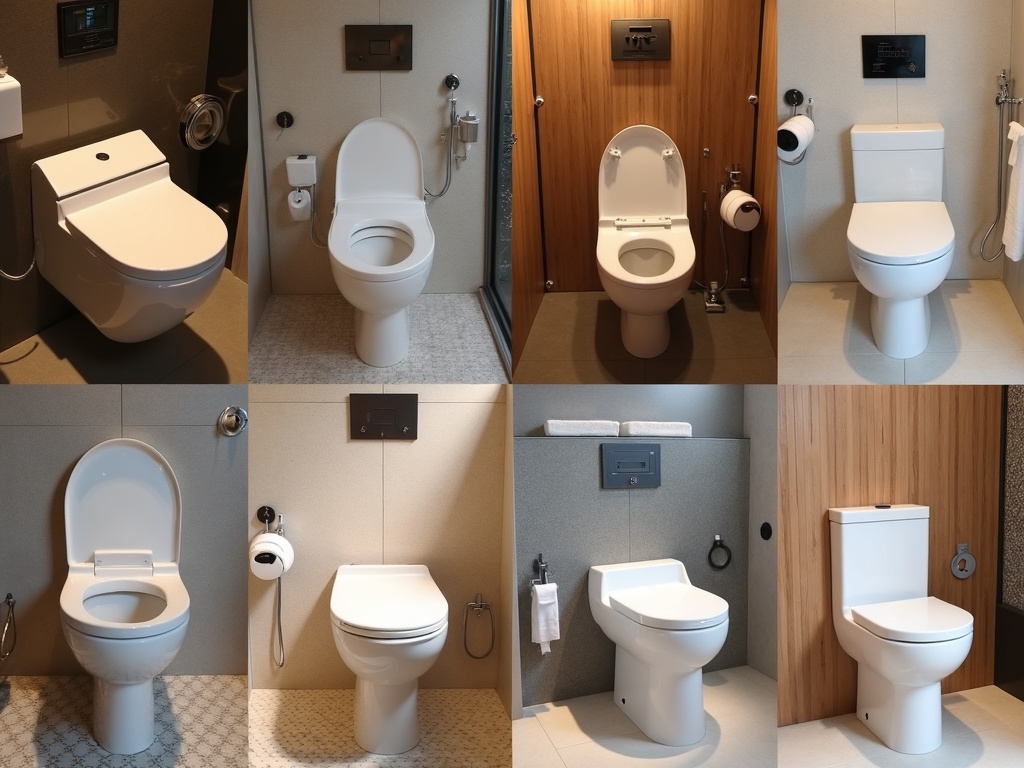
Sources:
Scientific American, Article: “Wipe or Wash? Do Bidets Save Forest and Water Resources?”
The Guardian, Article: “The bottom line: why it’s time the west overcame its fear of the bidet”
Business Insider, Article: “How the coronavirus pandemic is finally convincing Americans to buy bidets”
National Geographic, Article: “How toilet paper is a bigger polluter than you think”
The New York Times, Article: “The Bidet Is Having Its Moment”

